
Dog anatomy4 views Illustration by Laurie O'Keefe Medical Illustration & Animation
What is dog anatomy. Dog anatomy is how a dog is built. In other words, a dog's anatomy includes all the parts of a dog's body like: Skeletal structure. Internal organs. Musculoskeletal system. Senses. Body systems. Each body part plays an important role in how your dog moves, breathes, eats, and reproduces.
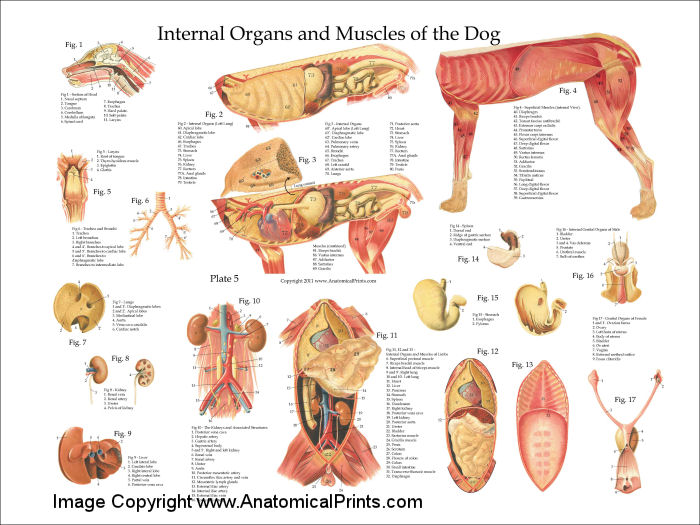
Dog Internal Anatomy Poster
Internal anatomy of a dog: carnivorous domestic mammal raised to perform various tasks for humans. Encephalon: seat of the intelluctual capacities of a gog. Spinal column: important part of the nervous system. Stomach: part of the digestive tract between the esophagus and the intestine. Spleen: hematopoiesis organ that produces lymphocytes.

Глубокие мышцы, внутренние органы собаки Dog Muscles & Internal Anatomy Собаки, Животные
Speaking of skeletons, a dog has 320 bones in their body (depending on the length of their tail) and around 700 muscles. Muscles attach to bones via tendons. Depending on the breed of dog, they will have different types of muscle fibers. You've probably heard about slow and fast twitch muscle fibers before.

Dog Anatomy Skeleton Animaltia
Dog - Muscles Dog - Thorax/Abdomen/Pelvis Animal - Anatomy atlas: Cardiovascular system Veterinary anatomy - Animal: ANATOMICAL PARTS Abdomen Abdominal aorta Abdominal mammary gland Abdominal mammary region Accessory carpal bone Acromion Adductor muscle Ala of ilium; Wing of ilium Ala of nose Anconeus muscle Antebrachial region Aortic arch
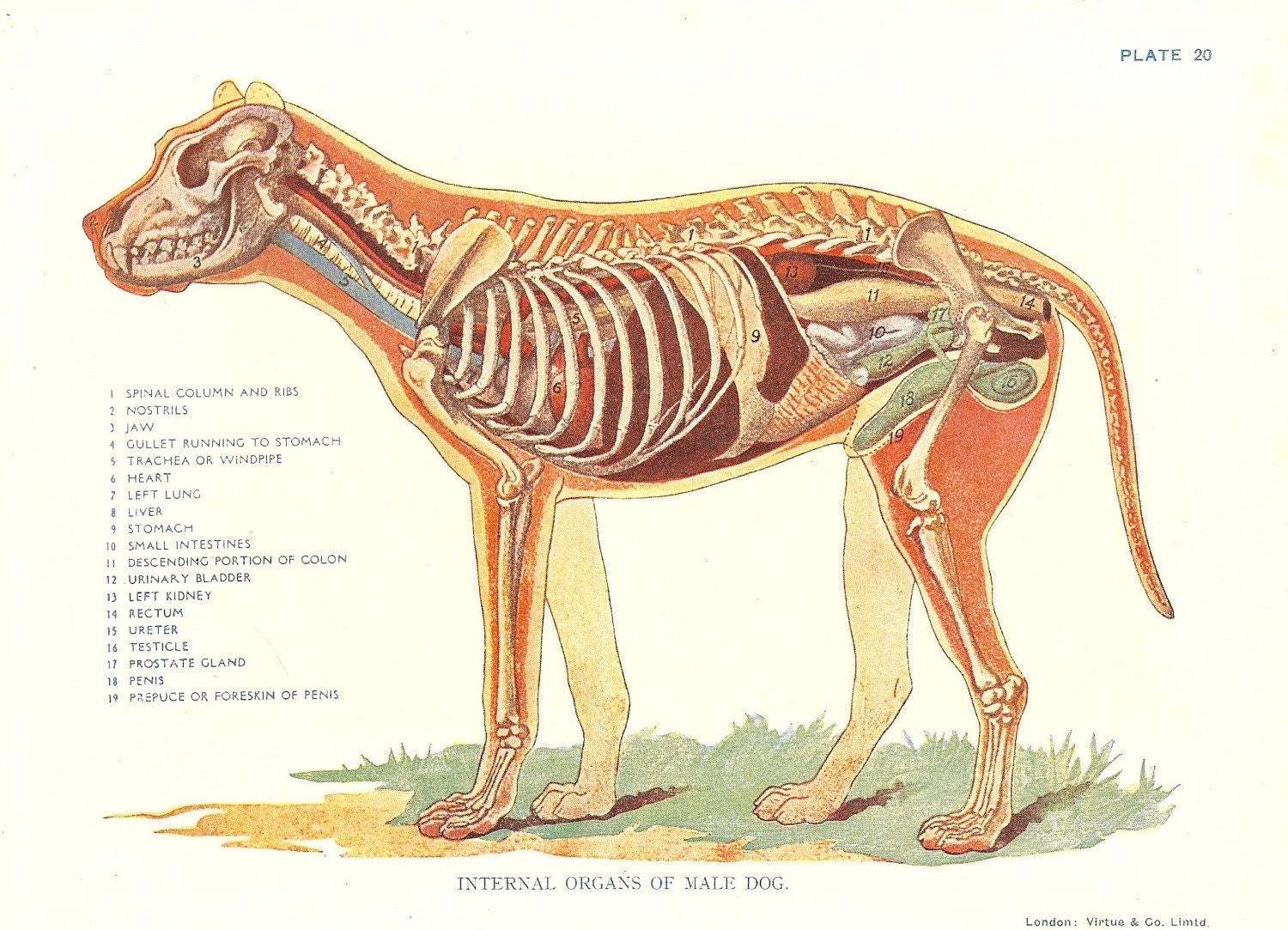
Dog Veterinary Print 1920s Internal Organs Of Male Dog
Our canine charts cover internal organ anatomy, the musculoskeletal system, common pathologies and guides to dog health and safety. Excellent wall displays in vet clinics, surgeries, dog groomers, and veterinary colleges. Our canine posters are suitable for both animal lovers and veterinary studies. Our canine model range covers detailed.
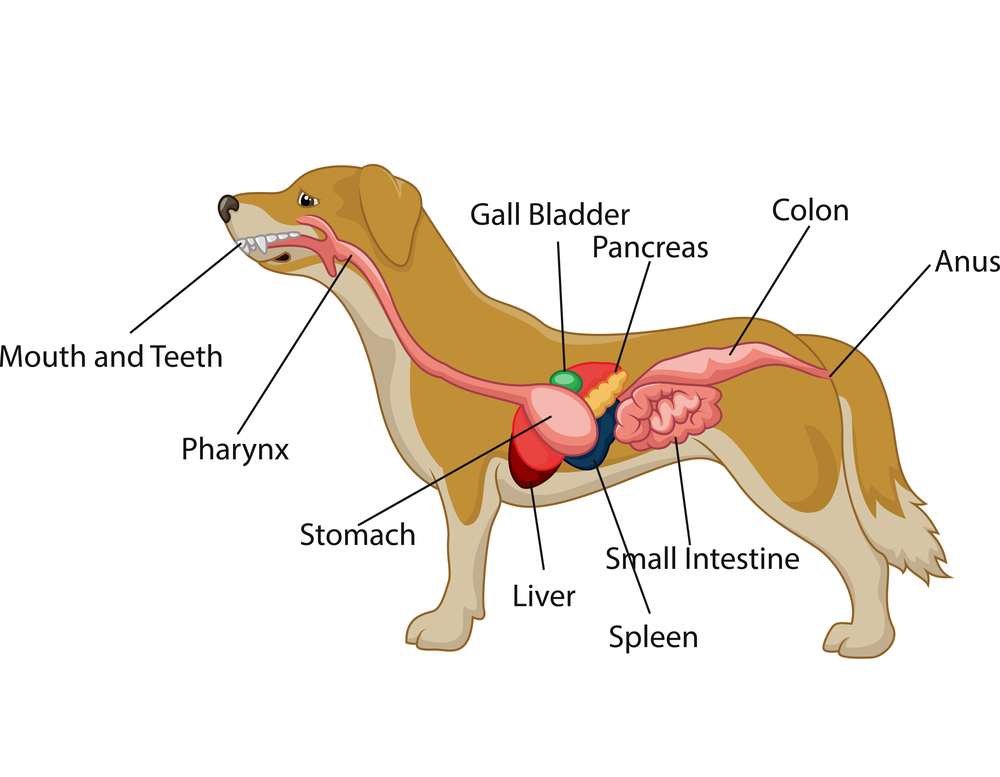
Dog Digestive Process and what the stages are and how it works
We discuss the internal and external anatomy of dogs so that you can see that, despite individual differences, there is a reason they are all considered part of the same species. You may also be interested in: Anatomy of a Frog - Internal and External Contents Canine anatomy Dog skeleton Muscles of the dog Organs of dogs Canine anatomy

Canine Internal Anatomy Chart. Anatomy of dog with inside organ structure examination vector
This module of vet-Anatomy is a basic atlas of normal imaging anatomy of the dog on radiographs. 51 sampled x-ray images of healthy dogs performed by Susanne AEB Borofka (PhD - dipl. ECVDI, Utrecht, Netherland) were categorized topographically into seven chapters (head, vertebral column, thoracic limb, pelvic limb, larynx/pharynx, thorax and abdomen/pelvis).
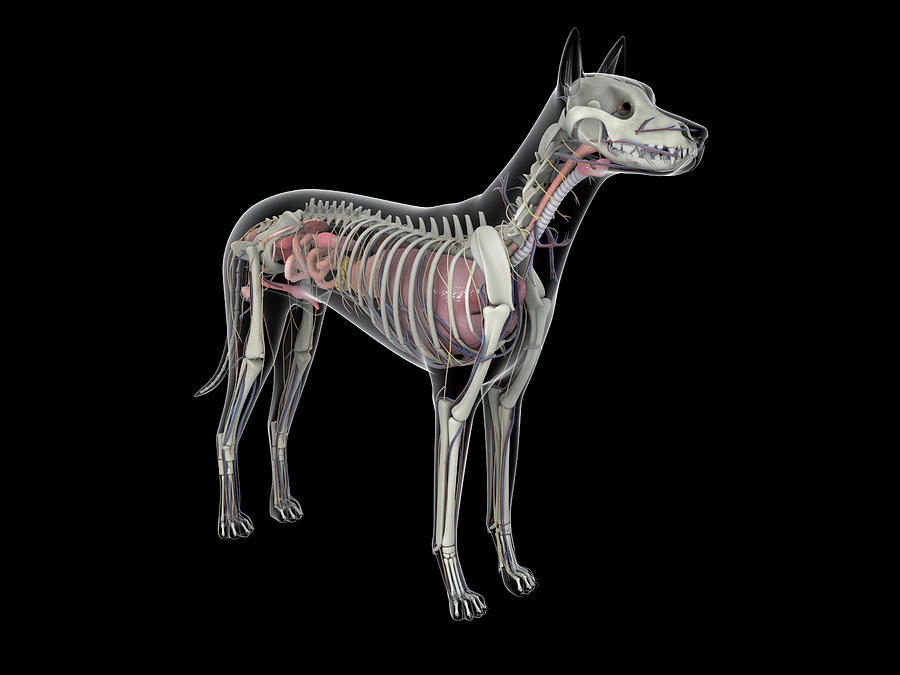
Dog Anatomy With Internal Organs Photograph by Stocktrek Images Fine Art America
Dogs have 42 teeth. Six pairs of sharp incisor teeth are in front of the mouth, flanked by two pairs of large canine ('dog') teeth. The other teeth are premolars and molars. The incisors and the canines are very important because the dog bites and tears at its food with these teeth. Tongue
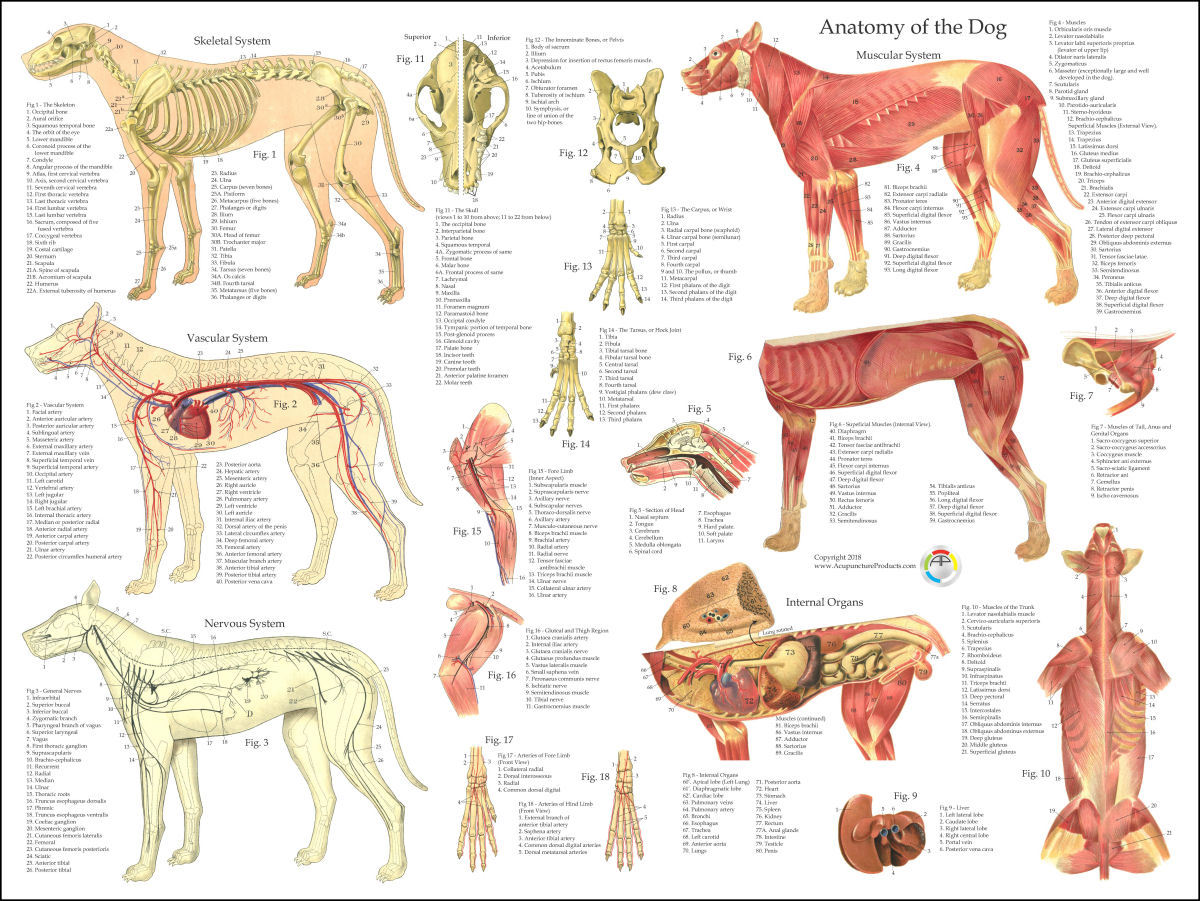
Dog Muscle Skeletal Veterinary Internal Anatomy Poster 18 X 24 Laminated Chart Art Posters
On the left side view of a dog's internal organs, you can see the lungs, heart, liver, stomach, spleen, kidney, intestines, bladder, and the rectum in that order from front to back. You can also view the spinal column and the brain. Laurie O'Keefe Dog Anatomy Organs Right Side

Anatomy of a male dog crosssection, showing the skeleton and internal organs. Colour process
These include the head, ears, eyes, nose, mouth, neck, tail, legs, and paws. The head of a dog is one of its most distinguishing features. It includes the skull, jaw, and teeth. The ears can be upright or floppy, and they come in a variety of shapes and sizes. The eyes are usually round and can be brown, blue, or green.
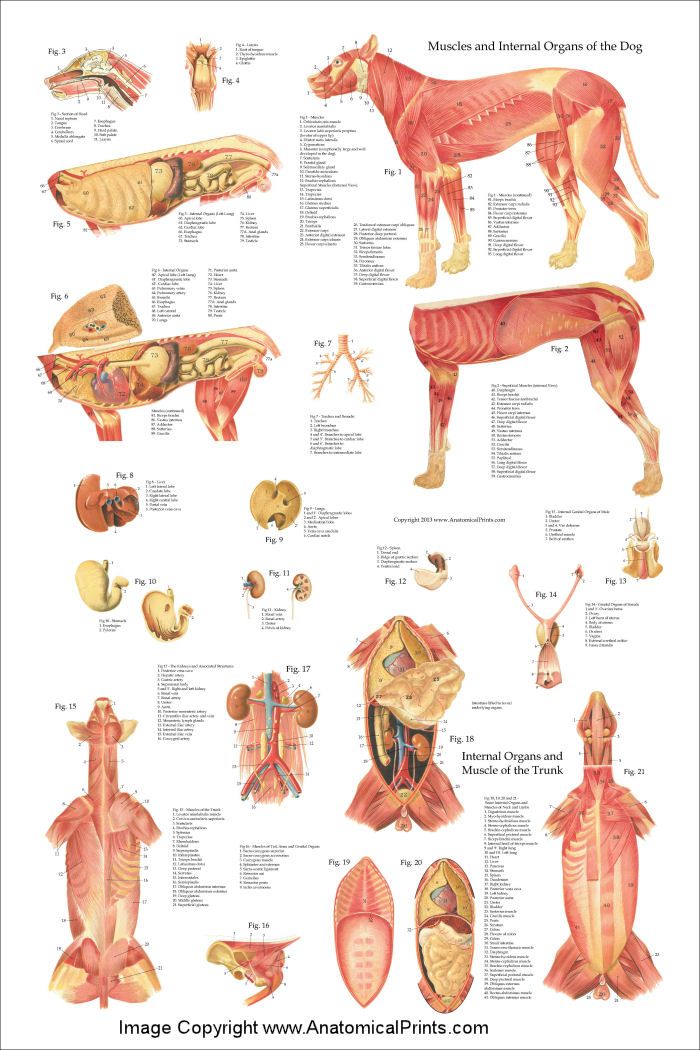
Dog Internal Anatomy Poster 24 x 36
Xiphoid region (Cranial abdominal region) Zygomatic bone. Zygomatic gland. Zygomatic region. Radiographic anatomy: labeled images in the transverse plane of a healthy dog's whole body, using tomodensitometry. Introduction to the anatomy of the skull, thorax, abdomen, pelvic cavity, muscles and blood vessels: main anatomical structures identified.

Parts of a Dog Useful Dog Anatomy with Pictures • 7ESL
Quick idea: in this article, you will learn the location of different organs from the different systems (like skeletal, digestive, respiratory, urinary, cardiovascular, endocrine, nervous, and special sense) of a dog with their important anatomical features.
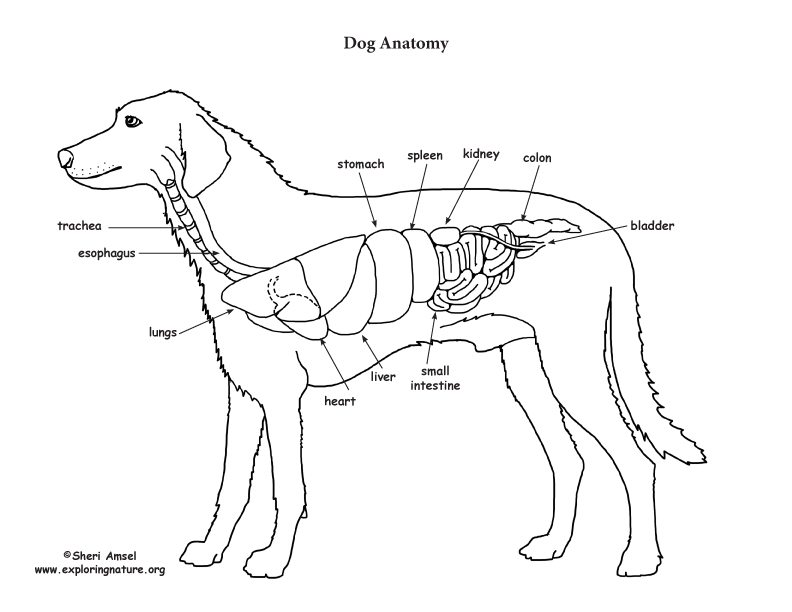
Dog Anatomy (Thoracic and Abdominal Organs)
Dogs, like all mammals, have eyes, a nose, a forehead, and ears. The only difference is that their noses are cold and wet, and their ears can be either dropped, erect, or cropped, depending on the breed. They also have a throat, a flew (the upper lip), chest, fore and hind legs, back, stomach, buttocks, and a tail.
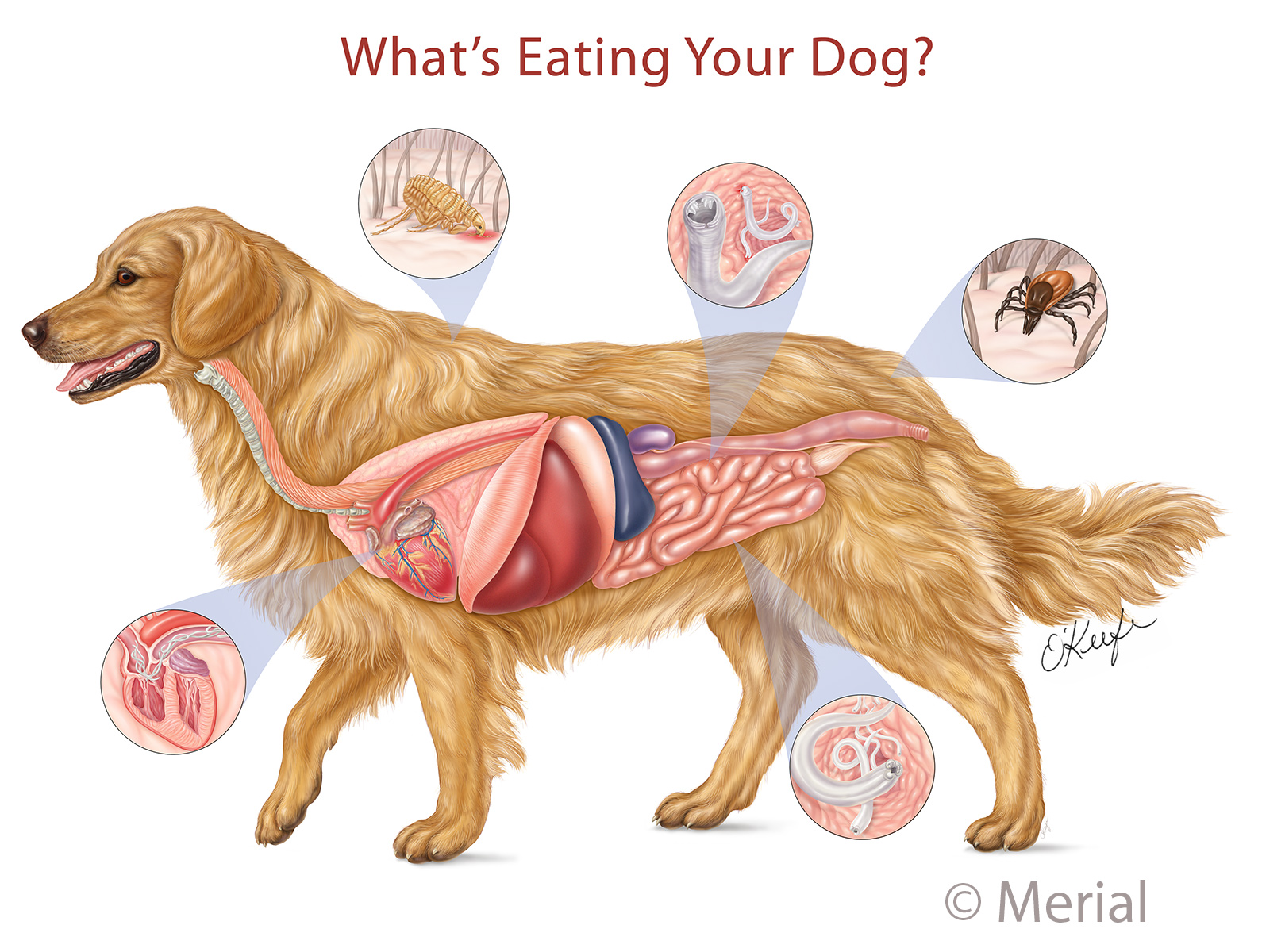
Dog Internal Anatomy Anatomical Charts & Posters
Internal Anatomy of the Female Dog's Body Female vs. Male Dog Anatomy Comparison Health Considerations Conclusion FAQs External Anatomy of Female Dogs The female dog anatomy bears features both common and unique to her gender. Observing them helps in general care and detecting health abnormalities.

Dog anatomy Royalty Free Vector Image VectorStock
Anatomic Planes The main planes of motion for dogs are as follows (see Figure 5-1): • The sagittal plane divides the dog into right and left portions. If this plane were in the midline of the body, this is the median plane or median sagittal plane. • The dorsal plane divides the dog into ventral and dorsal portions.

Internal Organs Of A Male Dog. From Photograph by Ken Welsh Pixels
A dog's physical anatomy is designed to help them navigate their environment and perform various tasks. Their bodies are made up of many different parts, including their skeleton, muscles and internal organs. One of the most important parts of a dog's anatomy is their skeleton.